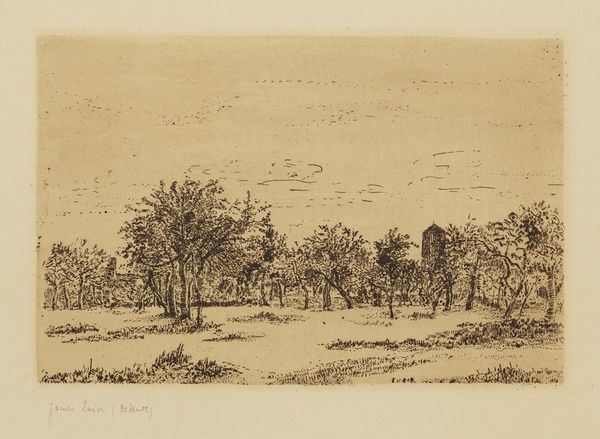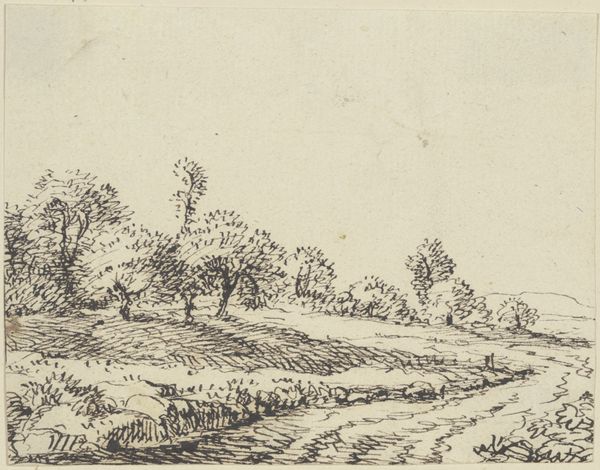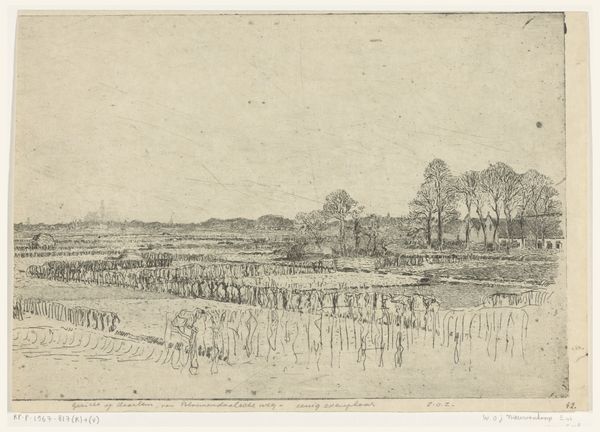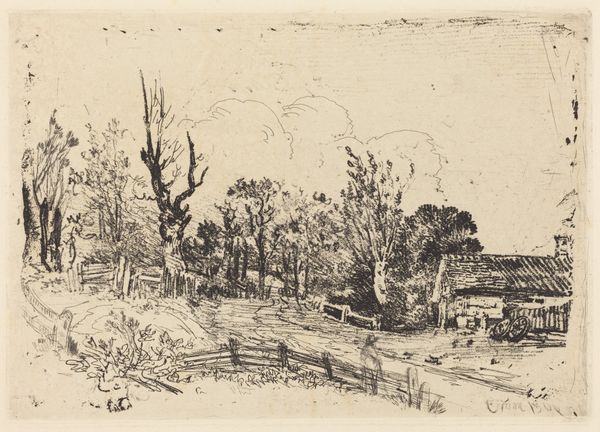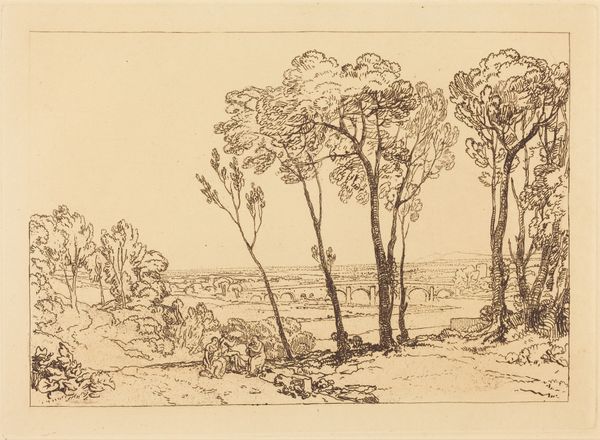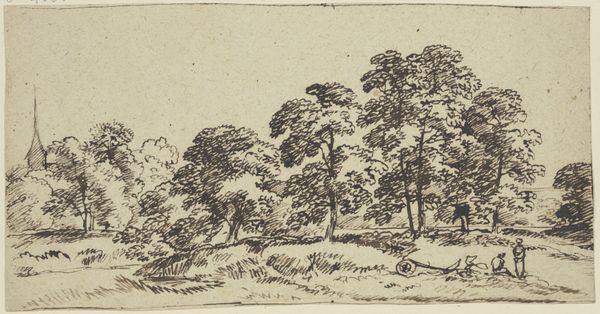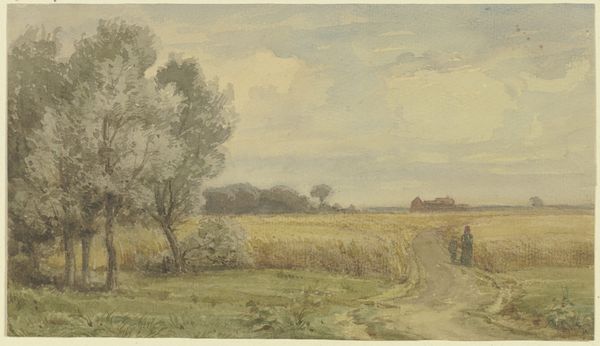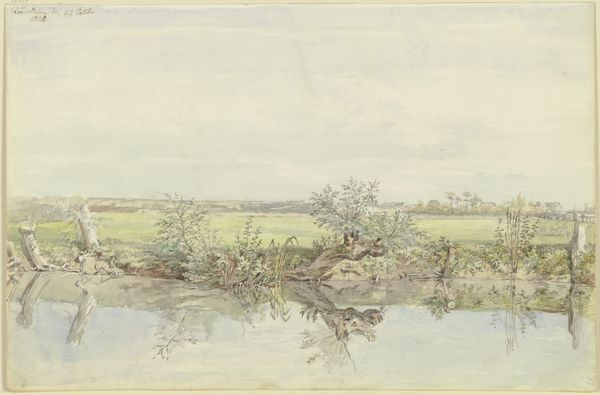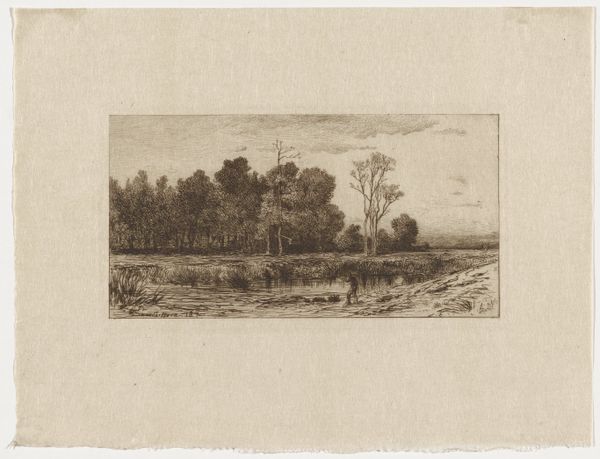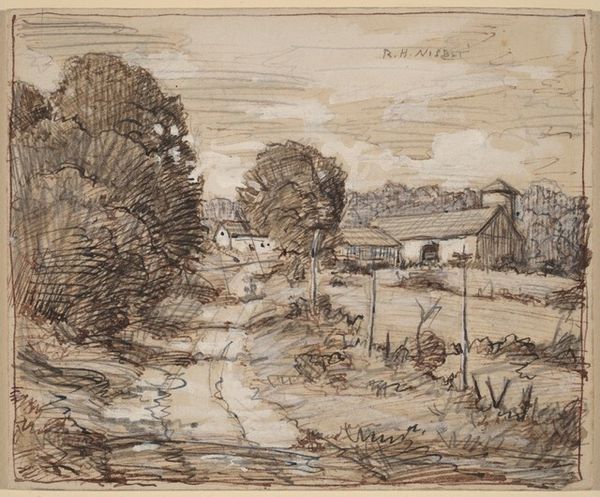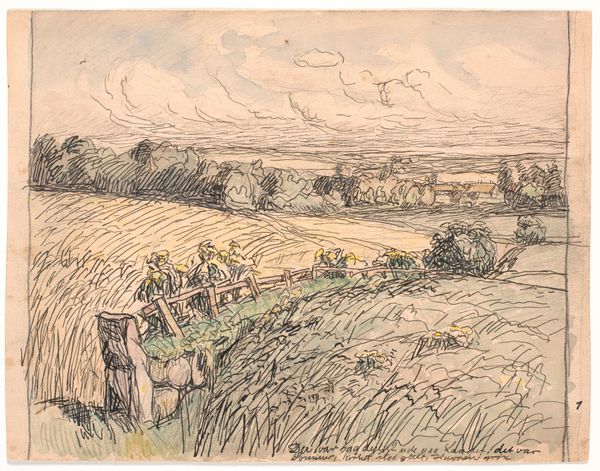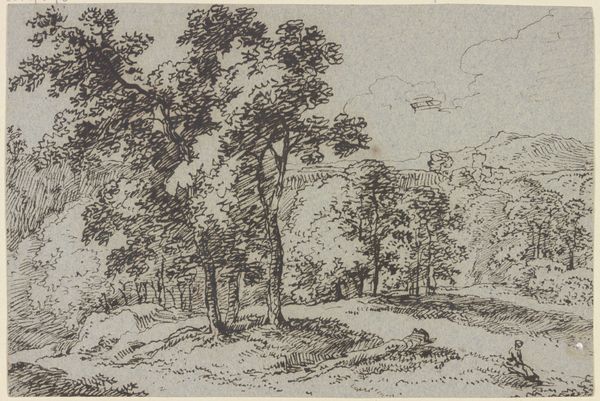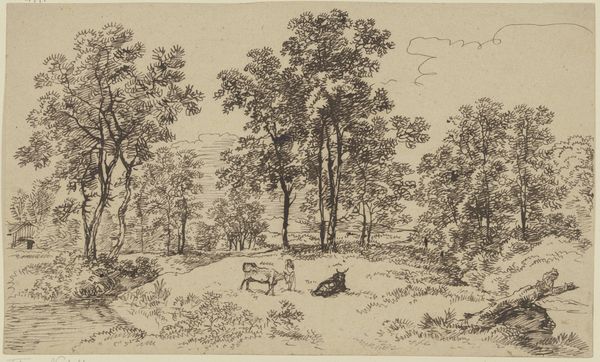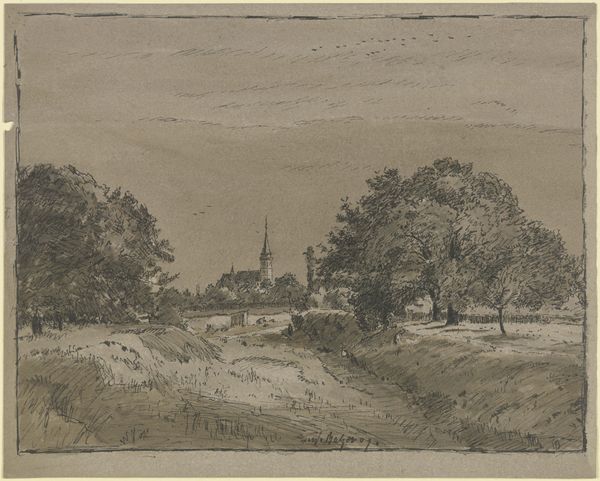
Dimensions: 123 × 204 mm
Copyright: Public Domain
Curator: Looking at Theodore Rousseau's "Footpath in the Barbizonnières," dating to 1864, the initial impact for me is one of understated melancholy. It is executed in pen, ink, and graphite on paper. Editor: I notice the landscape receding into the distance. All those tightly rendered blades of grass – one imagines the repetitive, almost meditative, labor involved. How does the making relate to Romanticism, and to realism? Curator: Rousseau and other Barbizon painters sought a return to direct engagement with nature, as a rejection of academic landscape painting. Realism, of course, aims to capture the world as it is, while Romanticism seeks to express emotional experience. Look at that lone figure in the distance, almost dissolving into the trees, and those almost indistinct birds up top... I find that deeply affecting. Editor: Precisely! The Barbizon school's focus on the common, accessible landscape resonated with growing social concerns. It spoke of a new kind of connection to the land. These fields are places of labor and productivity, of a working landscape accessible to ordinary people, compared to earlier traditions of heroic sublime wilderness. Curator: I agree. The choice of humble materials such as paper, ink and graphite echoes this connection. There’s a deliberate contrast to the grand canvases of the Salon. But still, there's an underlying emotional current, a sense of transience maybe tied to rapid industrialization threatening this landscape. It is both document and elegy. Editor: True, and think about the tools themselves; pen, ink, and graphite. Such common instruments of both work and art, they really democratize art production. We see how he returns again and again to build depth of shading. This drawing exemplifies the commitment to truth, material, and process found in his works. Curator: Thinking about its composition – this simple pathway, the unidealized vegetation – it's less a dramatic vista than an invitation for the viewer to share a personal, intimate encounter with the ordinary world, that for a moment may transcend the here and now. It is very humanistic! Editor: An intriguing convergence of natural observation, romantic sensibility, and working practices reflecting social change... Thank you! Curator: It was my pleasure to walk down that path with you.
Comments
No comments
Be the first to comment and join the conversation on the ultimate creative platform.
